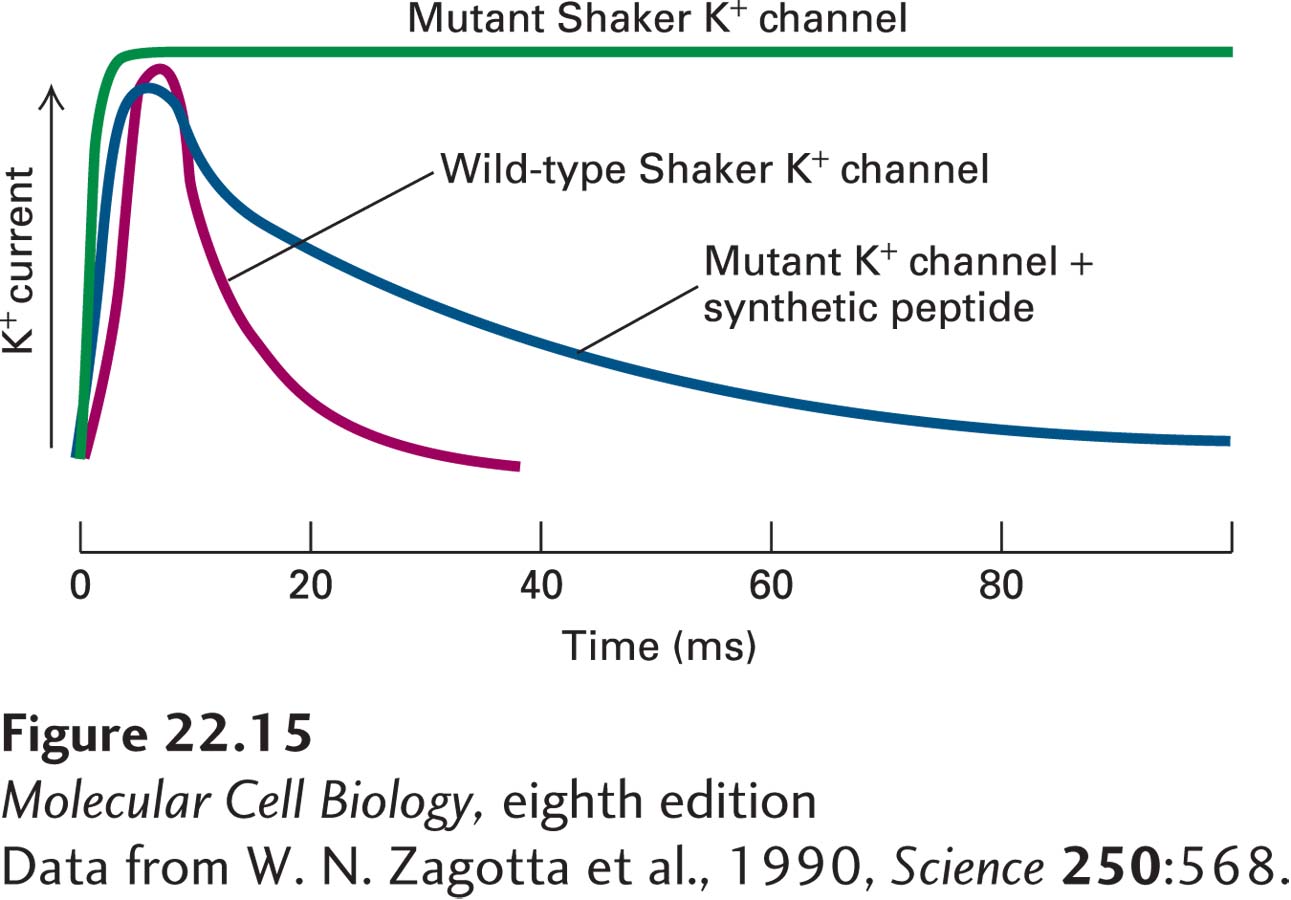
EXPERIMENTAL FIGURE 22- 15 Experiments with a mutant K+ channel lacking the N- terminal globular domains support the ball- and- chain inactivation model. The wild- type Shaker K+ channel and a mutant form lacking the amino acids composing the N- terminal ball were expressed in Xenopus oocytes. The activity of the channels was monitored by the patch- clamp technique. When patches were depolarized from 0 to +30 mV, the wild- type channel opened for ~5 ms and then closed (red curve). The mutant channel opened normally, but could not close (green curve). When a chemically synthesized ball peptide was added to the cytosolic face of the patch, the mutant channel opened normally and then closed (blue curve). This demonstrated that the added peptide inactivated the channel after it opened and that the ball does not have to be tethered to the protein in order to function.
[Data from W. N. Zagotta et al., 1990, Science 250:568.]
[Leave] [Close]